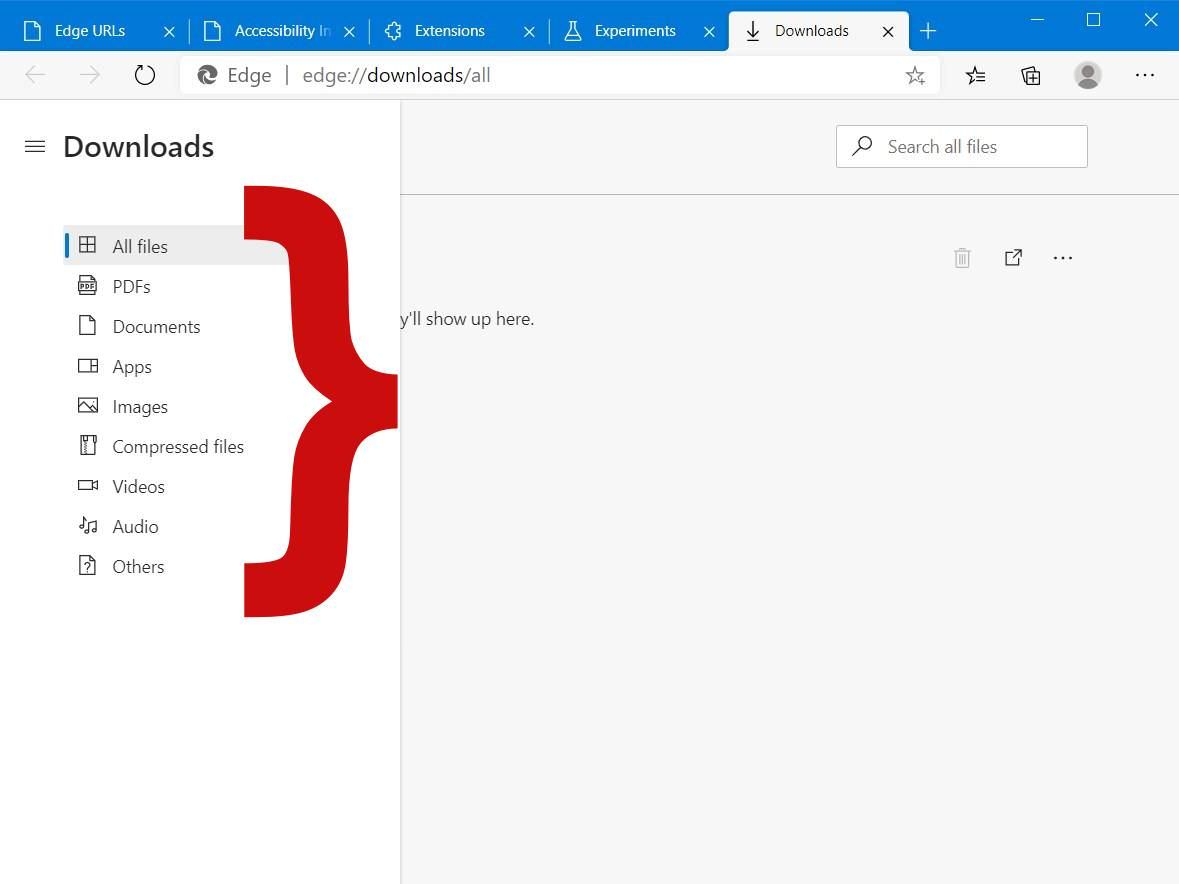15 Microsoft Edge Tips and Tricks to Boost Productivity
Microsoft Edge got a new life in late 2019 when Microsoft decided to drop EdgeHTML in favor of Chromium — the open-source browser that also powers Google Chrome.
Though it somewhat looks and feels like Chrome and supports its extensions as well, Edge also offers its own set of unique features.
That is why you must consider installing the new Edge along with Google Chrome or Mozilla Firefox. If you are using an older version of Windows 10 or you do not have the new Microsoft Edge, you can get it from its download page.
After all, it offers a lot of worthy enhancements over its predecessor. That said, let’s check out the productive tips and tricks for the new Microsoft Edge.
10 Hidden Microsoft Edge Features (and How to Use Them)
Best yet less-known features of Microsoft Edge and detail on how to use them effectively. Read more
1. Switch to dark theme in Edge
After the dark theme became popular in 2019, Windows 10 as well as macOS started offering native support for dark themes.
Fortunately, Microsoft has extended this support to its new web browser as well. However, it does not support automatic switching to the dark theme at night time.
Here’s how to enable it in Edge:
- Open edge://settings/appearance in Microsoft Edge. Or you can open Edge’s Settings, then choose Appearance from its left sidebar options.
- Under Customize browser, choose Dark for the option Default theme.

2. Switch between homepage layouts in Edge
The default homepage (i.e., new tab page) of Microsoft Edge is crowded with lots of services including Microsoft Bing and Microsoft News. If you find it crowded or simply wish to change the new tab view, follow the below instructions:
- Open a new tab and click the gear icon near the top-right corner.
- Choose one of the options under Page layout to switch the layout.
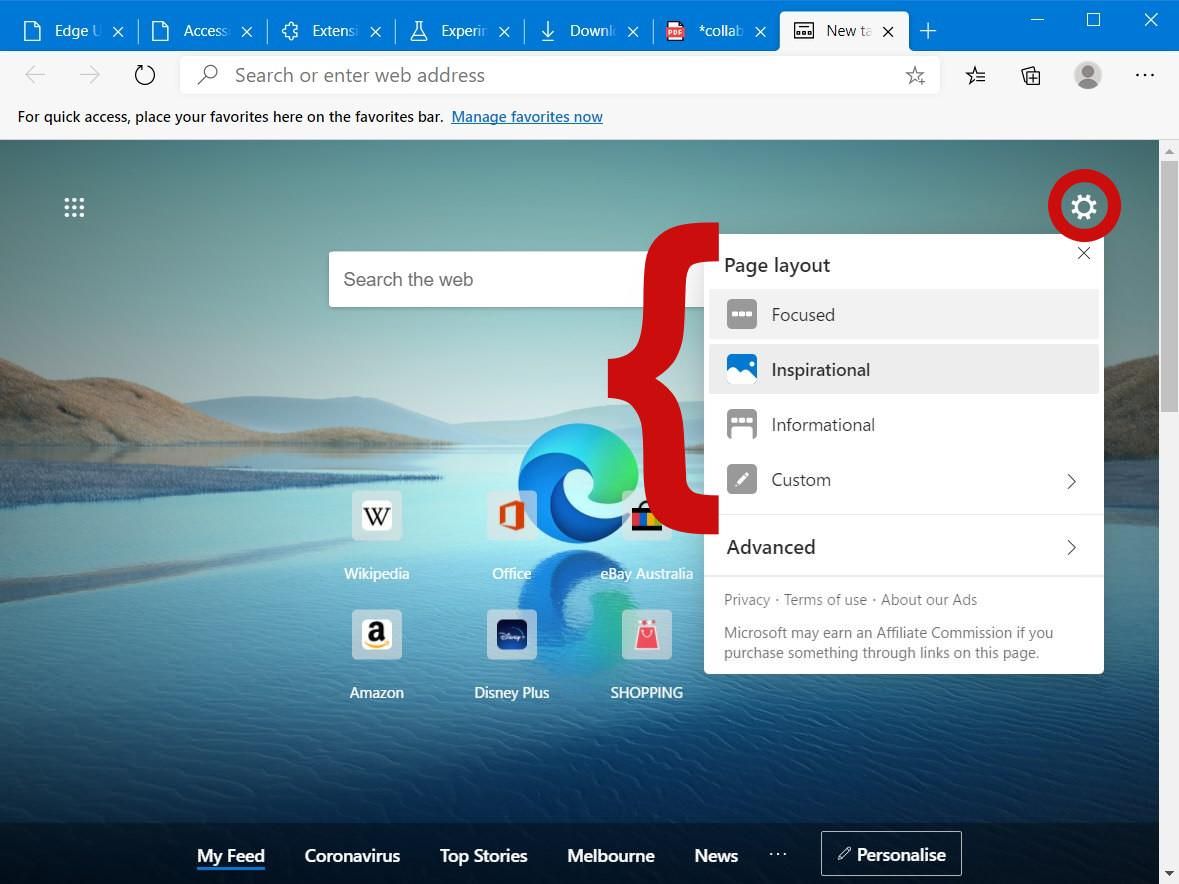
Alternately, you can also choose Custom to create and set your own layout. You can disable quick links, set a custom background, and more.
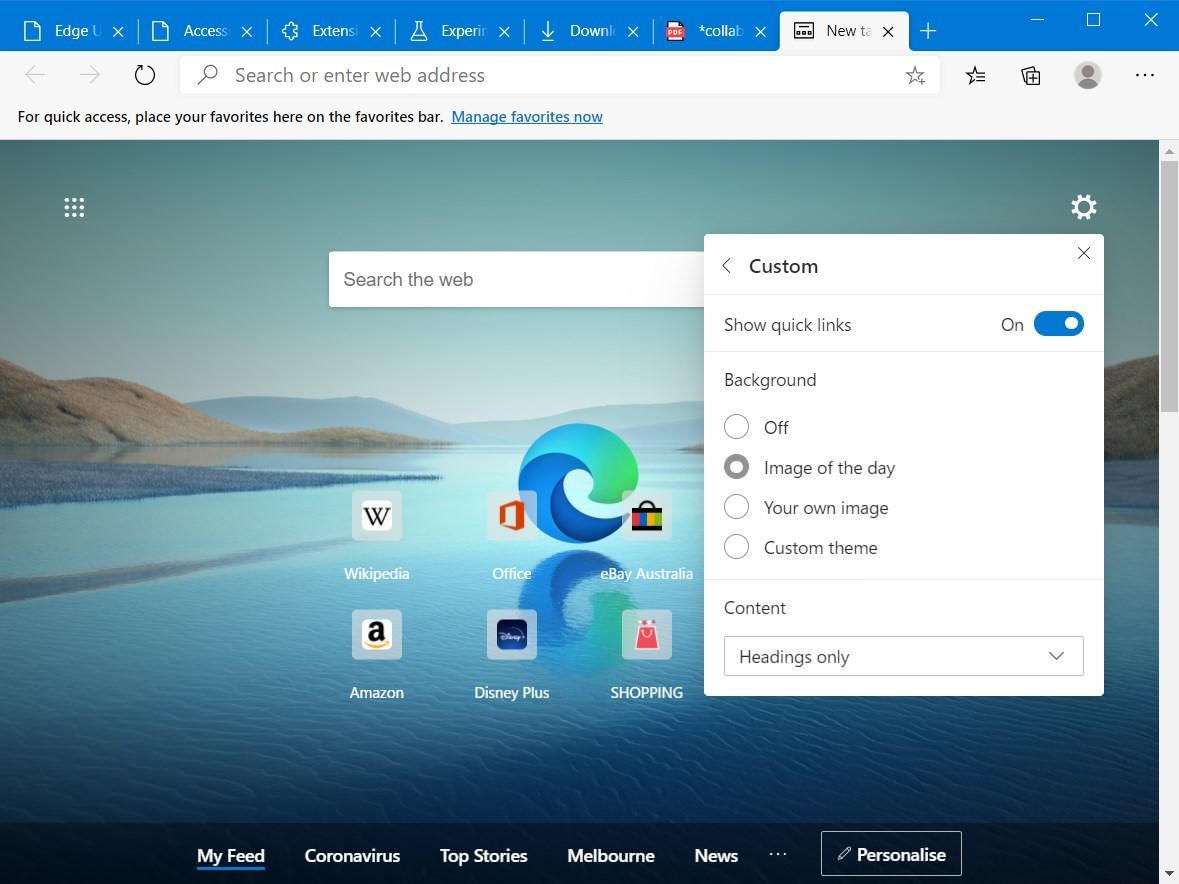
3. Change default search engine in Edge
If you are not a big fan of Microsoft Bing like me, you may wish to change its default search provider. I found Microsoft has hidden this setting deeper than in Google Chrome, but I have noted its address, making it easy for you:
- Open edge://settings/search in the new Edge. Or you can click Settings and more at the top-right corner and browse to Privacy, search, and services, then scroll down and click Address bar and search.
- Change the dropdown named Search engine used in the address bar.
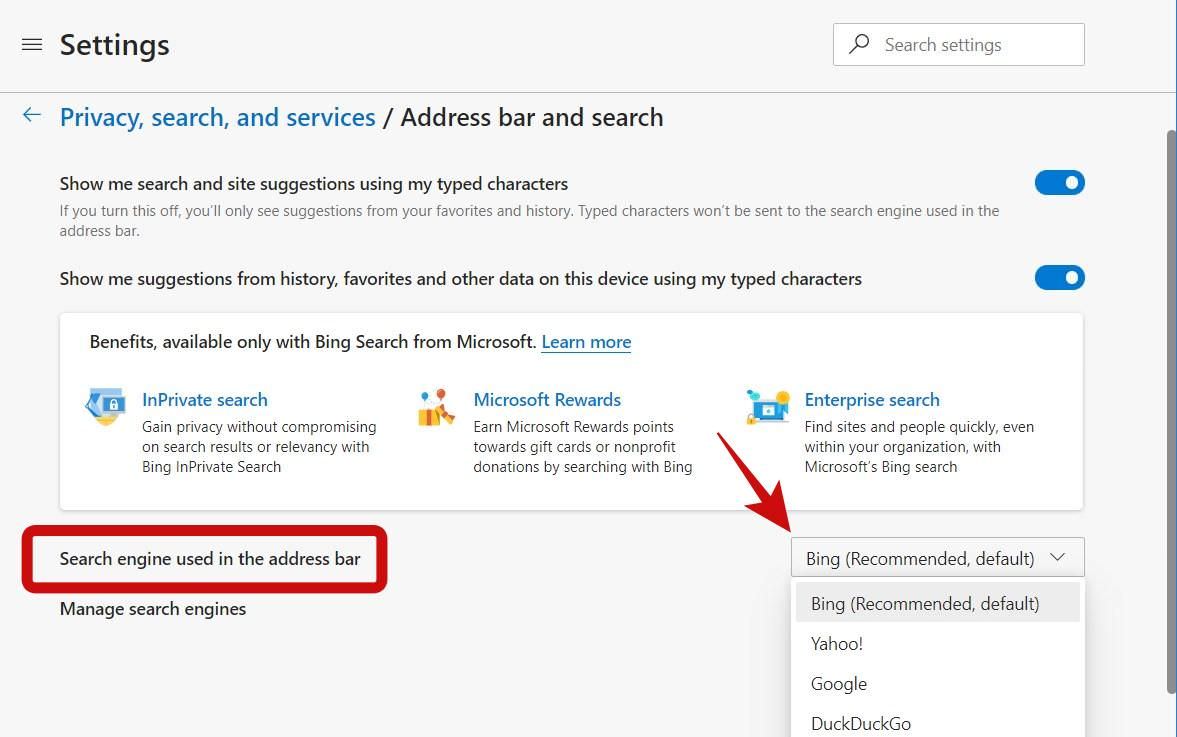
4. Review your privacy settings in Edge
Microsoft Edge sets the tracking protection to Balanced by default, which blocks harmful trackers from non-visited websites. You will notice that ads and content are less personalized than with no tracking protection.
However, if you are looking for enhanced tracking protection, follow the below instructions:
- Open edge://settings/privacy in the new Edge. Or you can click Settings and more at the top-right corner > Privacy, search, and services.
- Make sure that the Tracking prevention‘s toggle is enabled, then select Strict under Tracking prevention to maximize the protection.
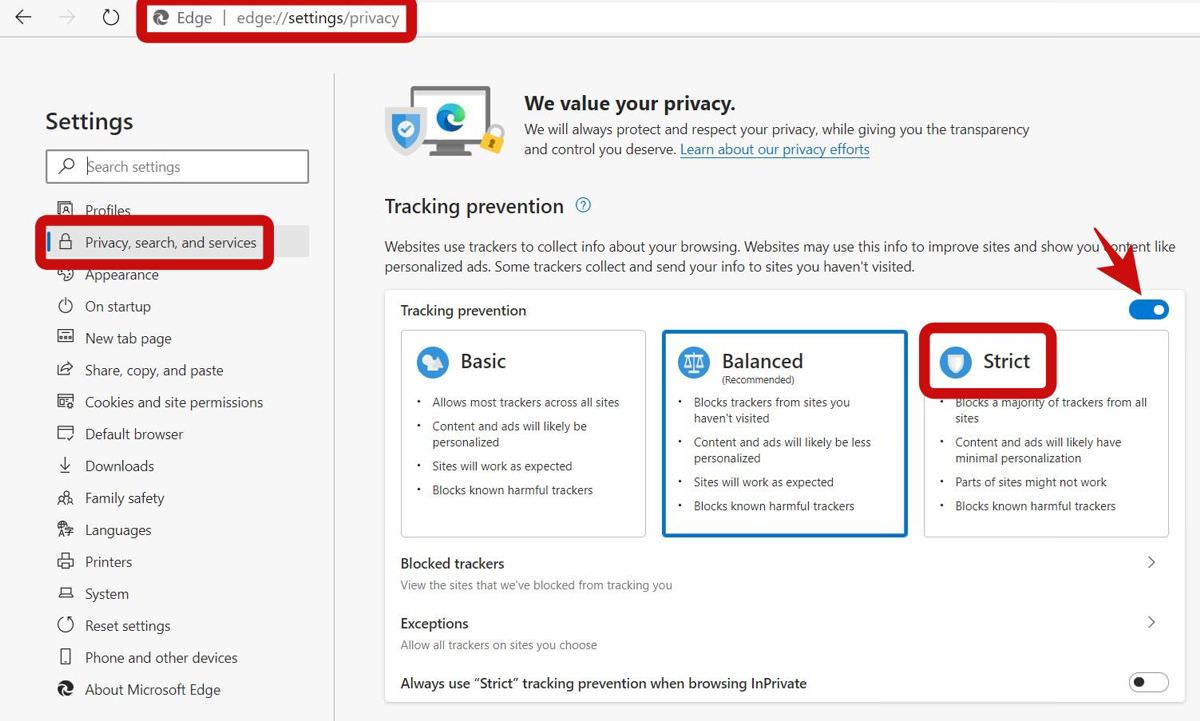
5. Personalize news in Edge
Microsoft Edge shows Microsoft News in the new tab (or homepage). If you are uninterested in the shown news, you can personalize them with following steps:
- Click on the Personalize button of the bottom menu in the new tab.
- Under My Interests, uncheck any items you do not want to see.

6. Save news posts to read later
If you find one of the default homepage layouts useful for reading news, you can utilize the new Edge’s Save for later feature for marking news posts for later.
Here’s how to do it:
- In the feed, click More options for a news item > click Save for later.
- For reading them, click Personalize > Saved Stories in the left sidebar.


7. Using Immersive Reader to read in peace
Microsoft Edge is full of features — especially for accessibility. Its Immersive Reader provides an awesome reading experience if you usually read documents and web pages on your computer.
It provides calm colors and adjustable font sizes to help you to relax and read, proving handy for students and researchers.
- Click the Immersive Reader icon in the address bar on a supported page.
- If you do not see it, the page does not support Edge’s Immersive Reader, but here’s a trick: select the text you want to read in peace, right-click the selection, and choose Open in Immersive Reader from the context menu.
- In the Immersive Reader you can click Text preferences to set text size and spacing along with page colors via themes. You can also click Reading preferences to translate or use a pictorial dictionary, surprisingly.
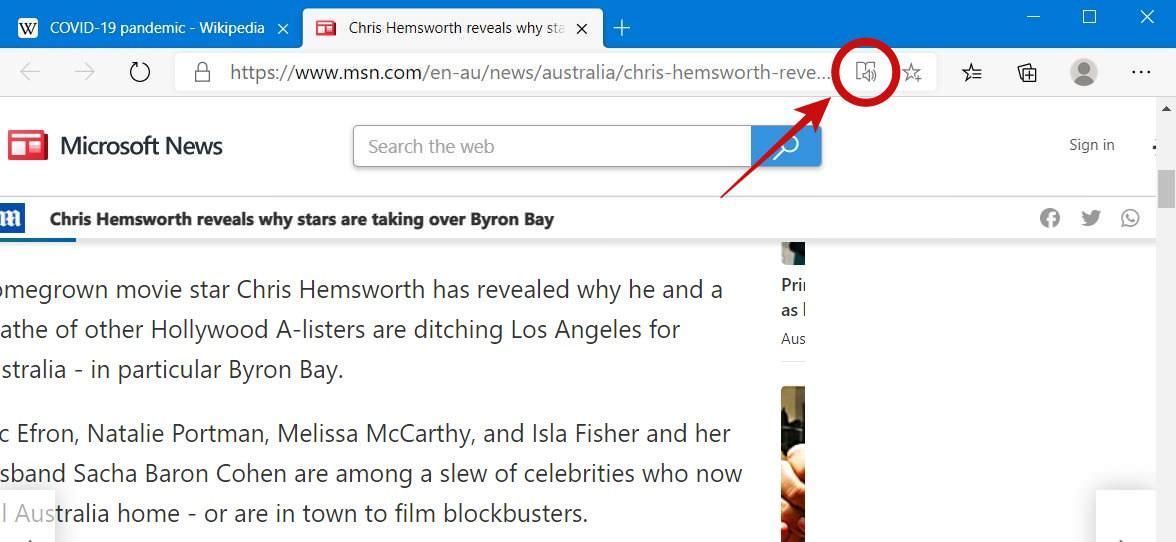
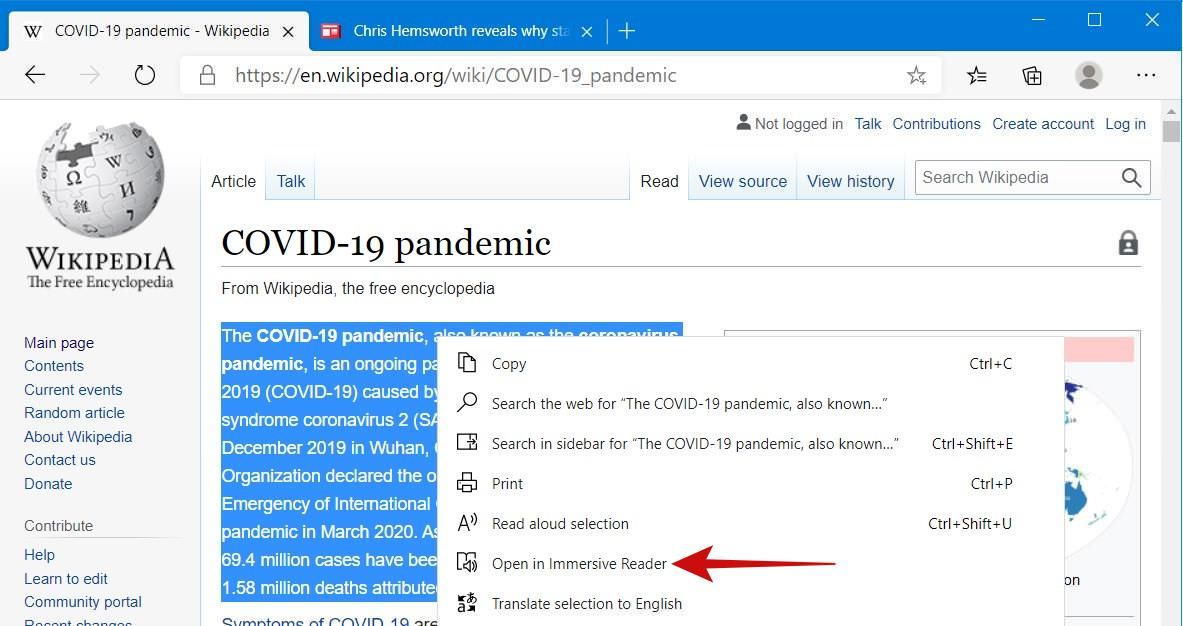
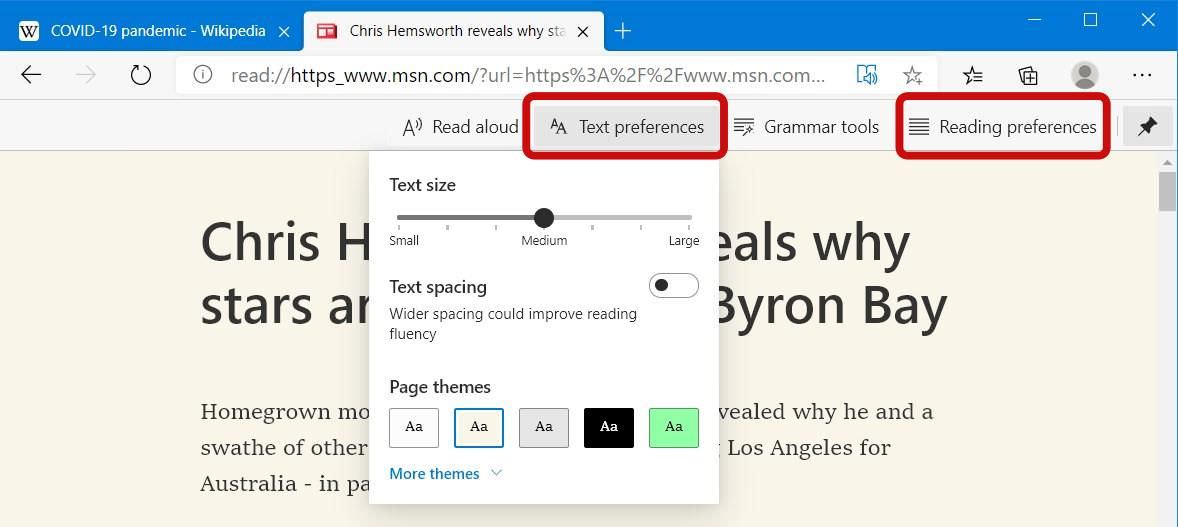
8. Improve english using Immersive Reader
As I discussed above, Microsoft Edge’s Immersive Reader is a handy tool, which comforts your reading experience. Surprisingly, it also offers Grammar tools and a Picture dictionary to help you improve your language skills. I find it to be an excellent tool for helping children understand English.
Follow these steps:
- Open a page or selected text in Immersive Reader (as shown above).
- Click Grammar tools and select one of the options. For example, I toggled on the option named Nouns to highlight all nouns in purple color.
- Click Reading preferences and toggle on Picture dictionary for the pictorial dictionary. Then, hover over a word showing the star to see its picture.


9. Use Read Aloud to listen to web pages
If you do not like reading or wish to give some relief to your eyes, you can use Edge’s Read aloud feature to listen to web pages and documents and e-books like PDF.
Though the new Edge has dropped support for EPUB, you can use an online reader and utilize Read aloud to listen to them in Edge.
Here’s how:
- Open any PDF or web page in Microsoft Edge.
- Click Settings and more at the top-right corner and go to Read aloud.
- Edge will start reading out the content to you. You can use Read previous paragraph and Read next paragraph buttons in its bar to change the paragraphs. Or click Voice options to manage the speech output.
- Optionally, you can also select some text, right-click on the selection, and choose Read aloud selection to only hear the selected text in Edge.
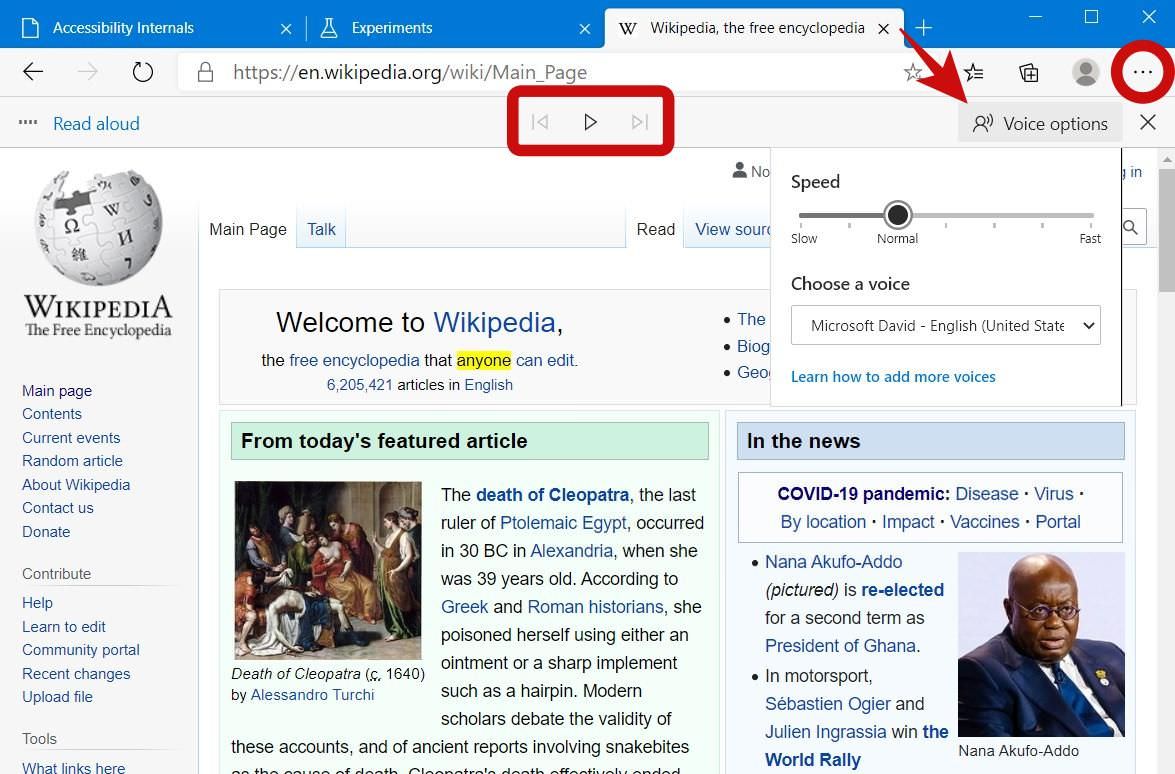
10. Save Notes and Pages with Collections
The new Edge introduced Collections — a feature to help you store and track images, links, notes, and web pages.
It helps you research for your homework, next planning trip, and/or shopping list. You can access it by clicking on the Collections icon in the top bar. Read our complete guide on Collections.
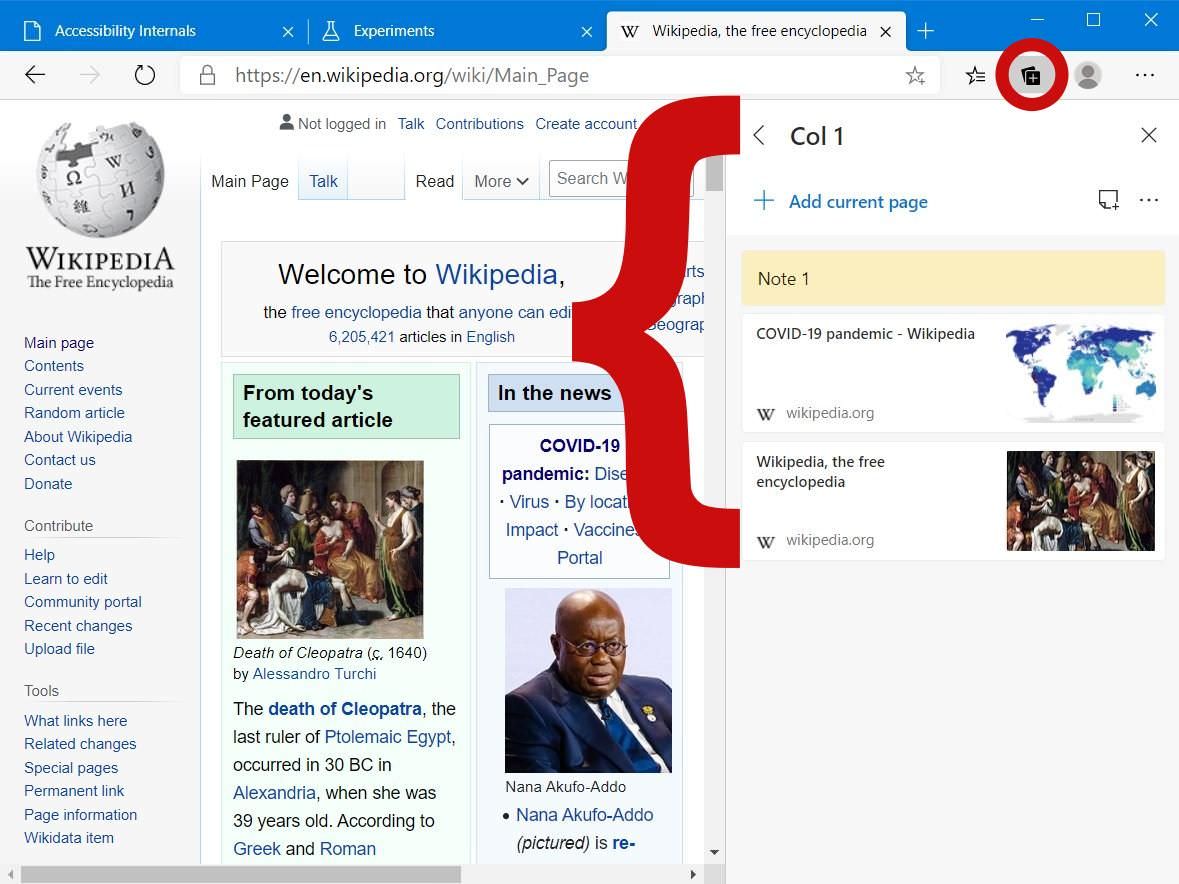
11. Annotate and sign PDFs in Edge
In 2021, every web browser supports opening and reading PDFs. The new Edge takes this feature one step further by allowing you to annotate and draw on PDFs. You can also sign a PDF using its draw feature.
Here’s how it works:
- Open a PDF in Edge and use its toolbar to draw on and highlight it.
- After you have drawn or highlighted the PDF, use the save buttons.
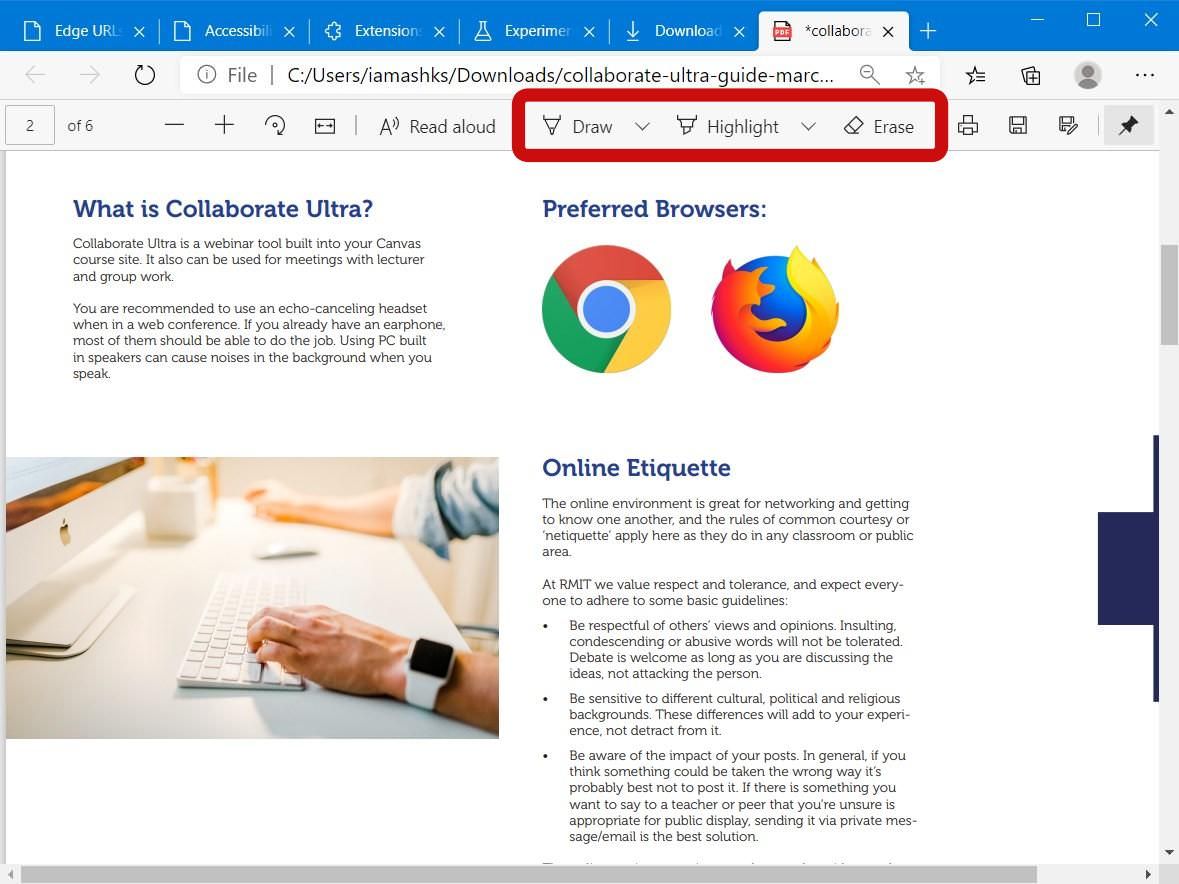
12. Install extensions from Chrome Web Store
Since the new Edge is built on top of Chromium, it supports Google Chrome extensions. However, before getting extensions from Chrome Web Store, you need to enable it first following the steps below:
- Open edge://extensions and enable the option named Allow extensions from other stores available at the left-bottom of the browser.
- Open https://chrome.google.com/webstore and get extensions.
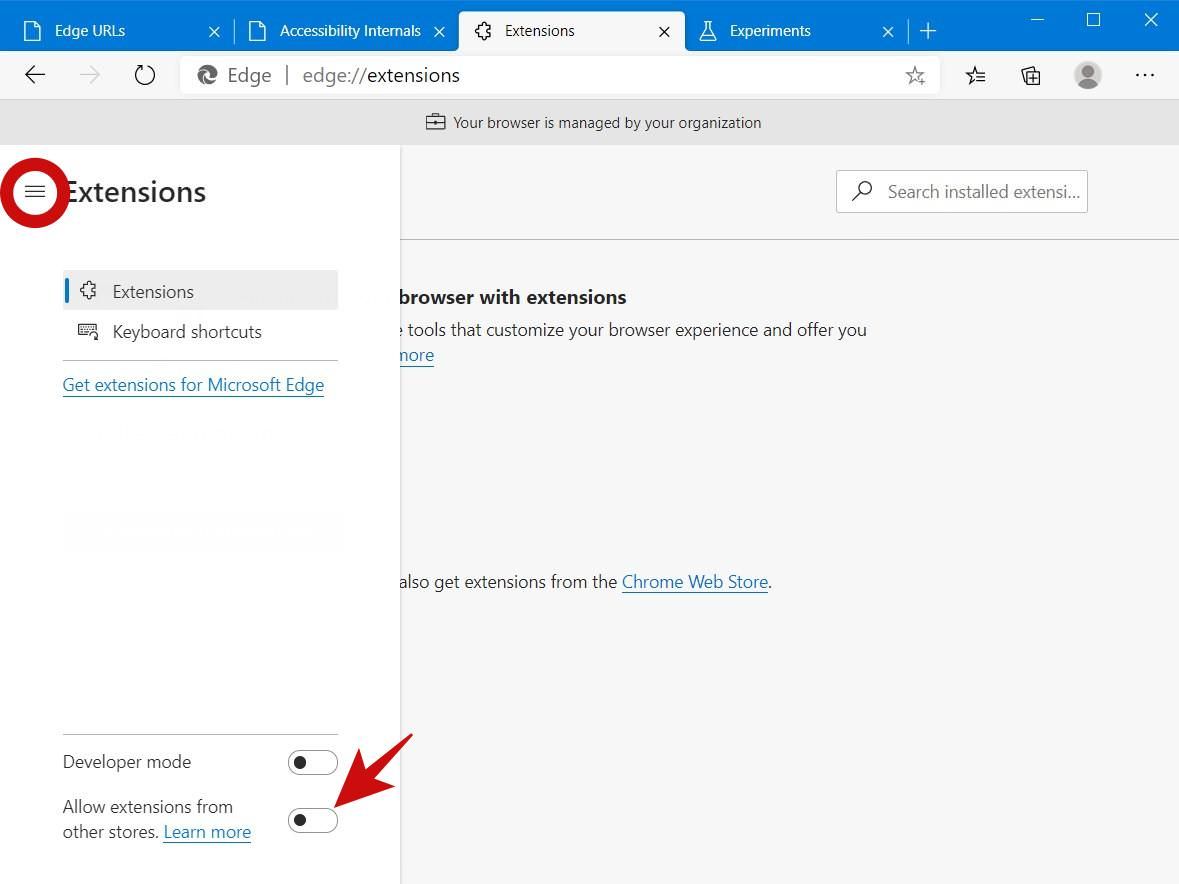
13. Turn Websites into an app in Edge
If you are a frequent user of a website or you need to use some website offline, you can install it as an app using Microsoft Edge.
Edge downloads the given web page and keeps its cached copy for running it offline turning it into an app. Interestingly, the app gets its place in App Switcher and Taskbar.
Here’s how you can create an app out of a web page in Edge:
- Click Settings and more at the top-right corner of Microsoft Edge, then go to Apps and click Install this site as an app to create an app.
- Enter a name for the app and click Install to turn it into an app. The new Edge will convert the website into an app and open it in a new window.
- You can find all installed apps under Settings and more menu > Apps.
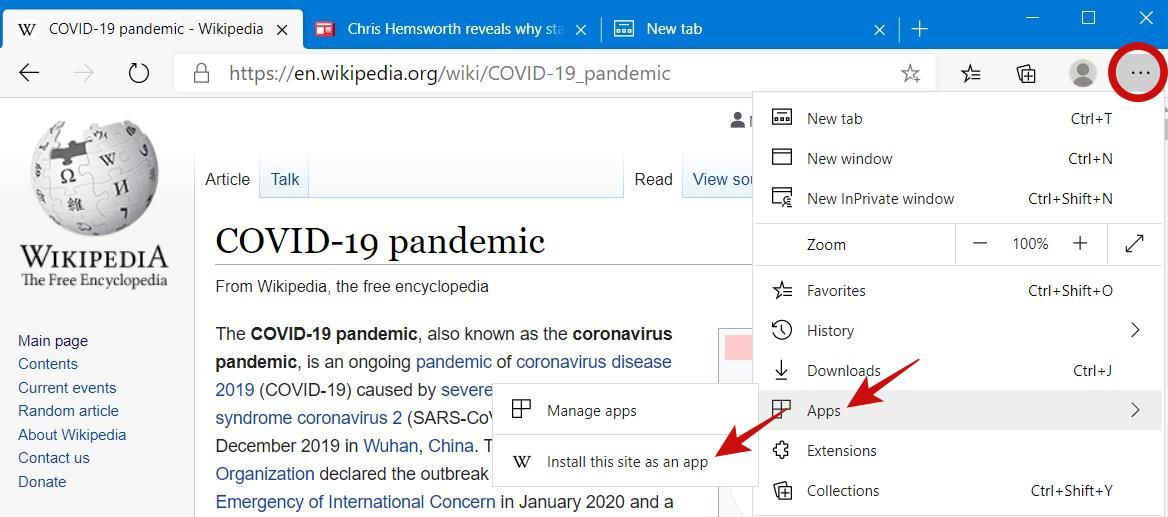

14. Pin web pages to Windows taskbar
If you often visit a website, say Trello or Slack, but you do not want to download and install their apps, Microsoft Edge has it covered for you.
Using the new Edge, you can pin a website directly to the Windows Taskbar, making it super quick for you to open your favorite website any time.
Here’s how to do it:
- Click Settings and more at the top-right corner of the new Edge, then go to More tools and select Pin to taskbar from the shown options.
- Enter a name for pinning and click Pin to pin it to the Taskbar.

15. Filter all downloads by file type
As I said before, the new Edge has some unique features, and the improved Downloads page is one of my favorites. Unlike Chrome, Edge can help you filter your downloads by file types, allowing you to quickly find one at times.
- Open edge://downloads or press Ctrl + J to open Downloads.
- Click one of the options in the left sidebar to filter accordingly. For example, if you choose PDFs among the options, it will show PDF files.
